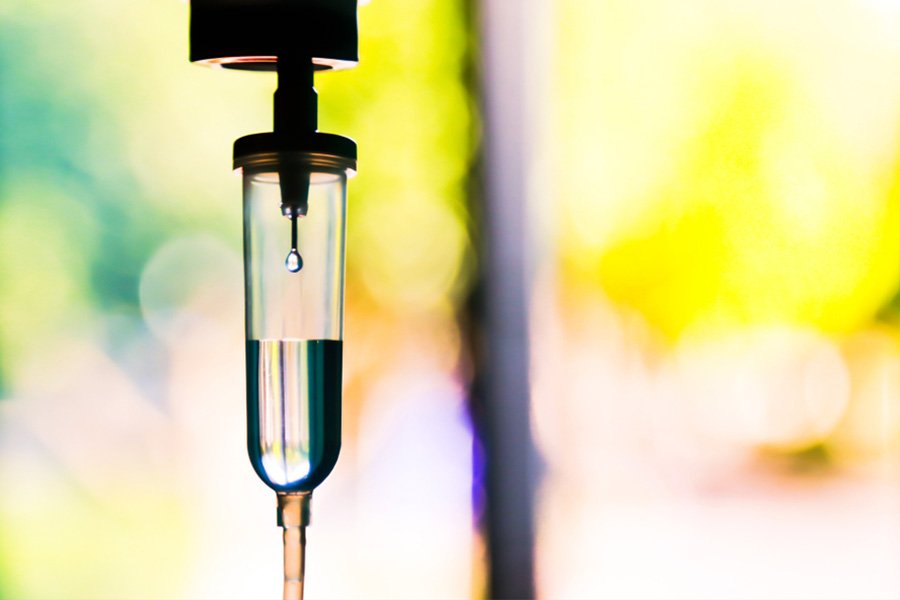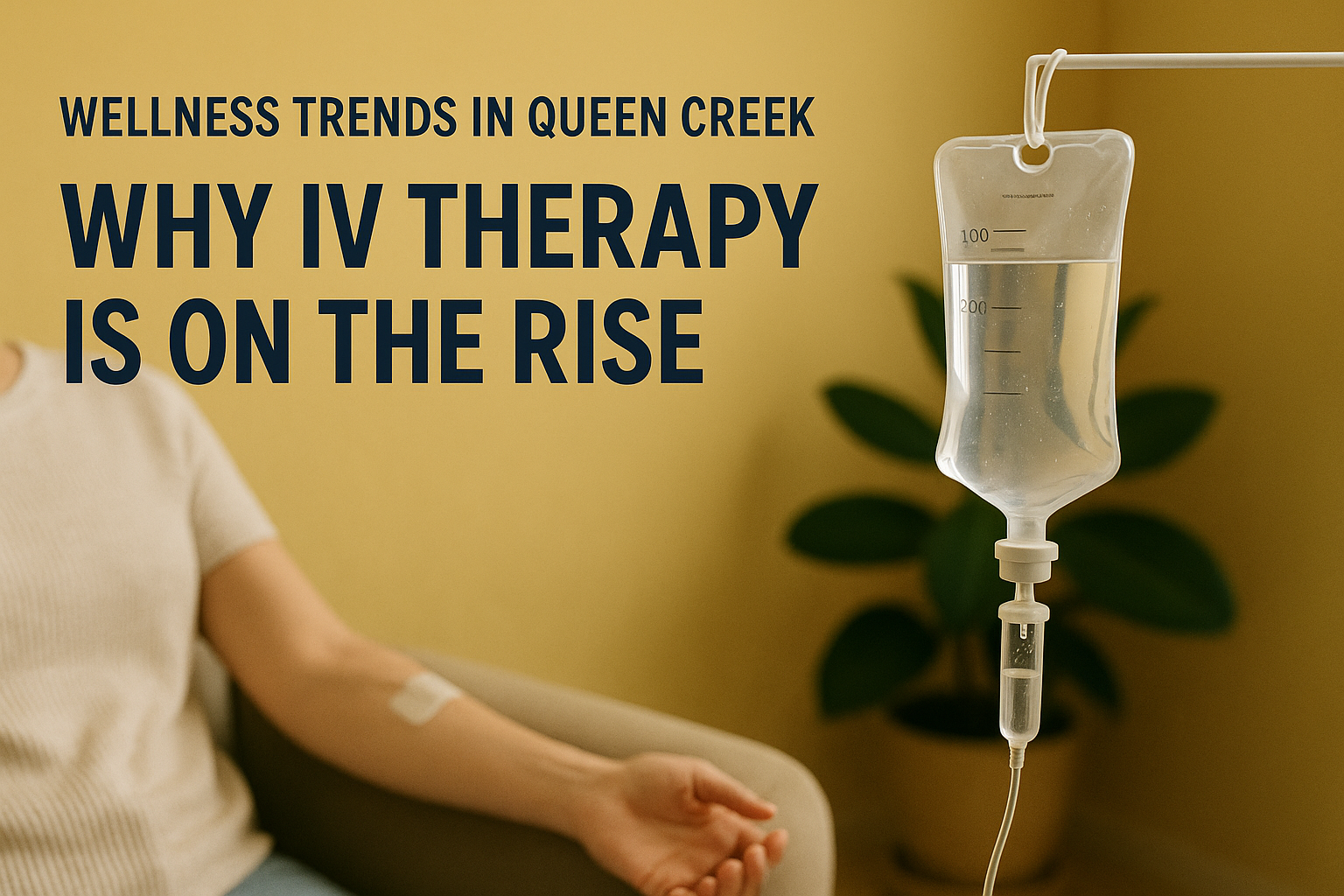IV therapy is no longer considered a stop-gap option but, rather, a potential way to enhance the health and wellness of the patient. Among the many perks, what stands out is how long does IV therapy take to work compared to the more traditional administration methods.
Intravenous therapy is a great option for a person to receive medicine or fluids directly into their vein. This way, the digestive system gets bypassed for the medicine and fluids to reach the bloodstream faster and more effectively.
The article will discuss IV therapy and its many advantages – its fast process and more effective delivery.

Source: shutterstock.com / Photo Contributor: YAKOBCHUK VIACHESLAV
How Long Does IV Therapy Take to Work?
On average, the IV infusion begins to work immediately and can have a long lasting effect. Some patients feel the effects between four days and two weeks. The time you’re probably going to feel the effects may depend on depends on various factors, which may include:
Type of fluid
Amount of fluid or medications
The condition of the recipient
The body’s response
Still, IV therapy takes much shorter to be delivered to the body than oral administration. Namely, IV therapy may take hours to get fully absorbed and metabolized by the body and sometimes may have immediate effects.
IV therapy may also avoid some potential side effects related to oral medications, like stomach irritation and various allergies.
Moreover, one of the biggest benefits of bypassing the digestive system is that they won’t get broken down by stomach acid, enzymes, or bacteria. This improves the bioavailability and maintains the potency of the substance, allowing it to deliver the intended effect with the administered dosage.
Finally, it reduces the risk of toxicity as the medicine, supplementation, and fluids can be received in more accurate and controlled doses.
How long does IV therapy take
The average time for an IV therapy session is 60 minutes, but it’s important to note that different therapies have varying duration. More complicated treatments require a longer time, while simpler ones usually take a short time and are entirely convenient for individuals with busy schedules.
You may be able to feel some effects of IV treatments immediately after the treatment, like increased energy levels and a feeling of freshness. For long-term goals like immune support and weight management, you may require multiple sessions over a longer period.
Short-term vs long-term effects
The effects of IV therapy can be of short-term and long-term in nature. Depending on the specific treatment and the health goals of the patient, IV therapy may provide immediate relief from symptoms or offer the promise of long-term benefits for health and wellness.
Every second spent feeling burned out and drained is time wasted that you will never get back. At The Drip IV Infusion, we are here to help you reclaim your energy and vitality with our cutting-edge IV therapy. By scheduling a treatment from our mobile IV therapy Queen Creek, you may experience rapid relief, rejuvenation, and revitalization in the comfort of your home.
Oral vs intravenous administration
Both oral and intravenous administration have their benefits and drawbacks and are related to timing, effectiveness, cost, and convenience. The biggest difference is in the pathway of the nutrients and medications, as they are absorbed differently in the person’s bloodstream.
Oral
With the oral method, medications and nutrients, as the name implies, are taken orally in the form of pills, capsules, liquids, or food. While it’s very convenient and can be done without supervision, oral ingestion of nutrients provides variable absorption.
As the pill or other form of the nutrient is swallowed, it travels to the stomach, where it encounters acid and digestive enzymes. The purpose of these substances is to break down food, and some medications or supplements may not be able to maintain their bioavailability from these influences. After that, the pill moves into the small intestine, where it gets absorbed into the bloodstream.
Intravenous
One of the biggest allures to the intravenous method is how soon does IV therapy take effect. Taking nutrients and medications intravenously bypasses the digestive system as they get delivered directly into the bloodstream.
The medications and nutrients are in liquid form and get injected directly into a vein using a sterile needle. The IV medications and nutrients may have a rapid onset of action as they quickly reach higher concentrations in the bloodstream.

Source: shutterstock.com / Photo Contributor: Numstocker
Reasons for IV therapy
IV therapy isn’t only used for treating medical conditions but also for more casual reasons such as:
Hydration
Wellness
Tackling inflammation
Sports recovery
Immune support
Tackling jet lag
Hangover cure
Convenience
Hydration
Considering how IV treatments get administered through a liquid, they all have the common effect of hydration. The most common IV fluid bag contains 1,000 mL, while there are also bags of half and a quarter of that amount.
IV therapy may help replenish lost fluids and electrolytes in the body, especially after physical activity or any other event involving excessive fluid loss for the patient. Furthermore, the delivery of fluids is faster, more controlled, and possibly lowers the risk of nausea that sometimes occurs with oral hydration.
Wellness
Various IV treatments target the patients’ wellness as the therapy cocktails contain youth-nurturing supplementation. Vitamins, minerals, ozone, collagen-supporting supplements, etc., are all designed to promote the health and long-term well-being of the patient.
Weight loss is another commonly desired effect of IV therapy, with lots of patients signing up to experience the possible fitness benefits of IV therapy. Some cocktail treatments are designed to support weight loss in different ways, including boosting the metabolism and burning fat.
Tackling inflammation
Inflammation is the body’s response to tissue damage or infections; at times, it can be painful and cause swelling. There’s an array of IV cocktails and therapies available to possibly alleviate inflammation, each tailored for a specific condition and according to the needs of the individual.
Vitamin C-infused cocktails have antioxidative properties that may help reduce inflammation. This is also true for vitamin B, glutathione, zinc, magnesium, etc., all of which are common contents of anti-inflammatory cocktails.
Sports recovery
If you exert yourself to intense physical activity through sports, adequate recovery is necessary. IV therapy is a popular method for boosting recovery as it may provide hydration and nutrition.
Amino acids are the building blocks of protein and aid in muscle repair and growth. Vitamins that reduce oxidative stress, boost the metabolism process at the cellular level and reduce inflammation are all important contributors to a potential quick recovery. That’s why many professional and amateur athletes seek IV therapy as a convenient way to optimize their performance.
Immune support
Immune support IV cocktails typically include ingredients like vitamin C, B complex, zinc, selenium, and other vitamins. It aims to enhance the body’s capacity for nutrient absorption, provide antioxidant support, and stimulate the production of immune cells.
Immune support therapy can aim to improve long-term health or possibly have an immediate effect through periodic IV sessions. Together with healthy habits like maintaining a balanced diet and regular exercise, immune support IV therapy might be effective in promoting overall health.
Tackling jet lag
Traveling from different time zones can cause stress to the body and affect overall well-being and productivity. Jet lag is a temporary sleep disorder that results in symptoms such as fatigue, insomnia, irritability, and lack of concentration.
IV therapy may help reduce jet lag symptoms by replenishing nutrients and giving an energy boost. This gives the person a better chance to quickly adapt to the new time zone and be productive sooner rather than later.

Source: shutterstock.com / Photo Contributor: Dragana Gordic
Hangover cure
Hangover is a relatively popular use case for IV therapy as people seek rapid relief from the effects of excessive alcohol consumption. This treatment is designed to address the dehydration, electrolyte imbalance, and nutrient depletion that commonly occurs after drinking.
As a diuretic, alcohol stimulates urine production, which often leads to dehydration. IV therapy may rapidly rehydrate the body by delivering fluids and electrolytes directly into the bloodstream without the nausea of oral consumption. Electrolytes like potassium and magnesium should restore the balance in the body, while vitamins may provide rapid relief from hangover symptoms.
Convenience
The most powerful reason for using IV therapy is its convenience for people with busy schedules or who want to live an organized life. It’s possible to receive IV therapy at home through mobile IV therapy services and access the benefits in the most comfortable environment.
You can schedule a treatment after work, training, or the morning after a night out and get the timely refreshment your body needs.
Customized IV treatments
Customized IV treatments require tailoring the therapy to meet the specific needs of the individual. The service provider makes an assessment of the client’s health status and medical history relative to their immediate and long-term wellness goals.
Based on the assessments, they create a tailored therapy with customized IV cocktails that involve select vitamins, minerals, nutrients, and other ingredients that may help achieve specific goals.
The duration of the treatment is flexible as it depends on the selection of ingredients and how the client responds to them. Throughout the sessions, the provider monitors the response of the patient and analyzes the feedback to adjust the therapy plan accordingly.
Summary
IV therapy begins to work quickly, and it may provide immediate benefits like hydration and relief from various symptoms. When discussing how long does IV therapy take to work, various factors need to be assessed, like the amount of fluid and the patient’s response rate.
IV therapy may have short-term and long-term benefits, but the nutrients get delivered immediately into the bloodstream because the digestive system gets bypassed. The benefits of IV therapy over the oral method are in the possibility that it allows for rapid and precise delivery of nutrients and medications, allowing them to take effect quickly and with high bioavailability.




